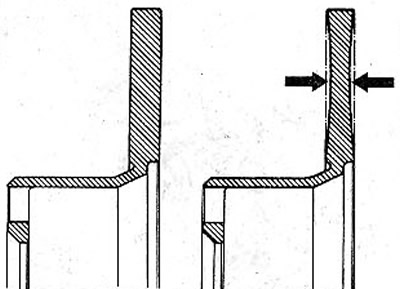2. Loosen the wheel bolts. The vehicle must be on wheels during this operation.
3. Place the vehicle on jack stands and remove the front wheels.
4. Measure the thickness of the brake discs at the thinnest point (see arrows in illustration). In workshops, a special caliber or micrometer with a bracket is used for this, since due to wear of the disc, a deflection of its surface is formed (see illustration 3.4). The thickness of the brake disc can also be measured with a conventional caliper, but at the same time, a gasket of the appropriate thickness must be placed on both sides of the disc (e.g. 1 or 2 nickels). To determine the exact thickness of the brake disc, you need to subtract the thickness of the coins or spacers placed from the obtained value.

3.4 Measure the thickness of the brake discs at the thinnest point (see arrows)
If the minimum allowable residual thickness is less than the nominal thickness, replace the brake disc. For brake disc dimensions, see chapter «Specifications». If significant cracks are found or if the grooves formed have a depth of more than 0.5 mm, then the brake disc must be replaced.
5. Install the wheels in accordance with the labels applied during removal and screw in the wheel bolts.
6. Lower the vehicle and tighten the bolts in a cross pattern to 90 Nm.
